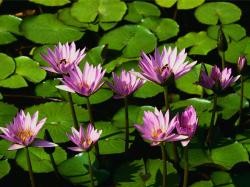LAST POSTS
Archives
“The Dirty Dozen” and “The Clean 15”
POSTED BY Rosemary ON Dec 20th, 2011
By: Rosemary Seguin CNP, NNCP
How do you know what fruits and vegetables you should always buy organic and which ones are “ok” to eat non organic? The Environmental Working Group (EWG) has done all the research and has created a list for us to shop by.
The lists are called “The Dirty Dozen” and the “The Clean Fifteen”. "The Dirty Dozen" is a list of the 12 most contaminated fruits and vegetables. Pay attention to that list and always try and buy those foods organic. “The Clean Fifteen” is a list of the fruits and vegetables least likely to test positive for pesticides, so you can rest easy and buy those foods non-organic.
According to the EWG, if you choose 5 servings of fruits and vegetables from the Clean 15 rather than the Dirty Dozen, you can lower the amount of pesticides you consume daily by 92 percent! Wow. Now that’s something to think about.
I must also add to this, for those concerned about genetically modified foods (GMO’s) these lists do not take that into consideration. Only the pesticide residues have been studied here. Since GMO foods in Canada are not labeled, you must buy organic in order to be certain the food is not GMO.
Here is the “Dirty Dozen” and “The Clean 15”
Source: Environmental Working Group 2011, http://www.ewg.org/foodnews/
|
The Dirty Dozen
1.Apples 2.Celery 3.Strawberries 4. Peaches 5.Spinach 6.Nectarines – Imported 7.Grapes – imported 8. Sweet Bell Peppers 9. Potatoes 10.Blueberries – Domestic 11.Lettuce 12.Kale/Collard Greens
|
The Clean 15
1. Onions 2. Sweet Corn 3. Pineapples 4. Avocados 5. Asparagus 6. Sweet peas 7. Mangoes 8. Eggplants 9. Cantaloupe – domestic 10. Kiwi 11. Cabbage 12. Watermelon 13. Sweet Potatoes 14. Grapefruit 15. Mushrooms |
Note: Corn used for animal feed and biofuels is almost all produced with genetically modified (GMO) seeds, as is some sweet corn sold for human consumption. EWG advises those who have concerns about GMOs to buy organic sweet corn. http://www.ewg.org/foodnews/summary/
For anyone interested in the EWG’s Methodology it is all explained on their website http://www.ewg.org/foodnews/methodology/
You can also get a free app for your iphone from the EWG with these lists just type in “dirty dozen” in the search bar of your iphone.
Another free app I really love is “What’s on my food” by the Pesticide Action Network. It has an alphabetized list of fruits and veggies and gives you a total residue score for each food listed.
Both apps are a great resource when you’re at the grocery store for a quick look up!
Happy shopping!







Hi Rosemary,
This is a very useful information but it is done by EWG in the US. Is there any similar research available for Canadian market, please? Specifically for Toronto region. Also how someone should treat domestic-imported terms of US based research trying to apply those to Canadian market? There should be significant difference based on two different standards/regulations in the US and Canada. Also numbers would differ based on region and tendencies of local farmers, e.g. in the famous for fruit growing Niagara Peninsula. All this would be very helpful to know.
Thank you,
Gennady
There is no information outlining the safety or chemical hazards of Ontario produce crops at this time and I’m not sure there ever will be such info. That being said, there have been some programs put in place in recent years to help Ontario fruit growers, including Niagara region, reduce their total pesticide use.
Hi Gennady, Thanks for your comment. You are right the “Dirty Dozen” and “Clean 15” is a US based list of produce. Unfortunately I have yet to see any research pertaining to pesticide residues for crops grown in Canada or Ontario. The lists I provided here are to be used as a guide and to make consumers more aware. Much of our produce in Ontario and Canada is imported from the US (especially during the winter months). These lists provide useful information for many of those that buy produce imported from the US. Conventional farmers in Ontario and Canada still use pesticides, herbicides and fungicides on their crops so we should be mindful of that even when purchasing locally grown produce. I agree with you, it would be very helpful to have research available on pesticide residues for our local/Canadian market. Until then, organic is always the safest choice.
In Good Health,
Rosemary